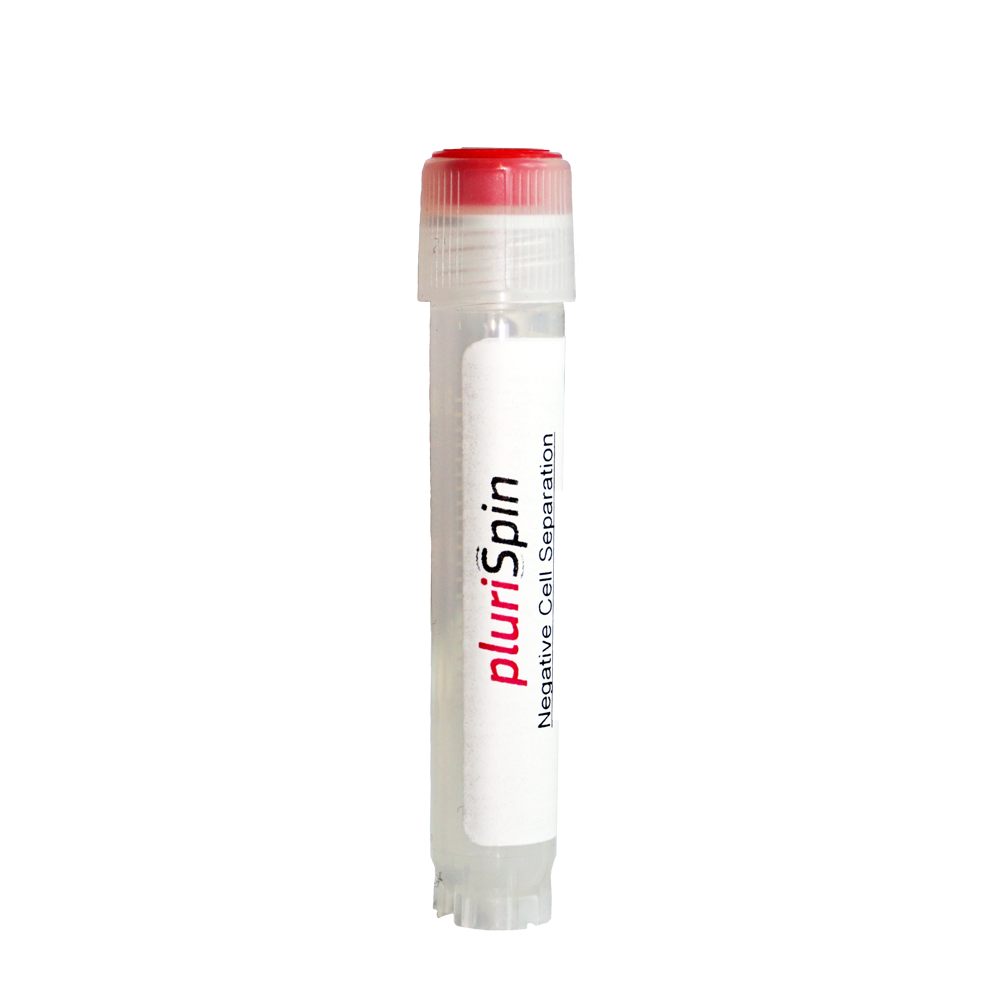Specification
Target cells
Monocytes
Cell separation method
negative
Cell depletion
Performed with PBMC Spin density gradient medium.
Compatible with
PBMC 24+ Spin Medium, Lymphoprep, Ficoll, Pancoll
Species
Human
Sample material
Whole blood, PBMC, PMNC, bone marrow, cell cultures
Cell separation platform
non-magnetic
Can be combined with
pluriMate or SepMate tubes
Features
Negative selection
Unwanted cells are labeled with specific antibodies and then removed, while the desired cells remain unlabeled in the suspension and retain their natural properties.
High purity and cell viability
The isolated cells remain functional and can be used directly for subsequent experiments such as flow cytometry (FACS), cell culture or molecular biological analyses.
No magnetic beads or columns required
Unlike many other cell separation methods, pluriSpin does not require magnetic beads or columns, which simplifies the process and preserves cell integrity.
Compatible
Purification by density centrifugation can be carried out using PBMC Spin Medium or comparable density media from other manufacturers, such as Lymphopreo, Ficoll or Pancoll.
pluriSpin, non-magnetic negative cell separation.
Isolate. Centrifuge. Analyze.
Accessories
Buffers and consumables for rapid cell enrichment with pluriSpin can be found here:


